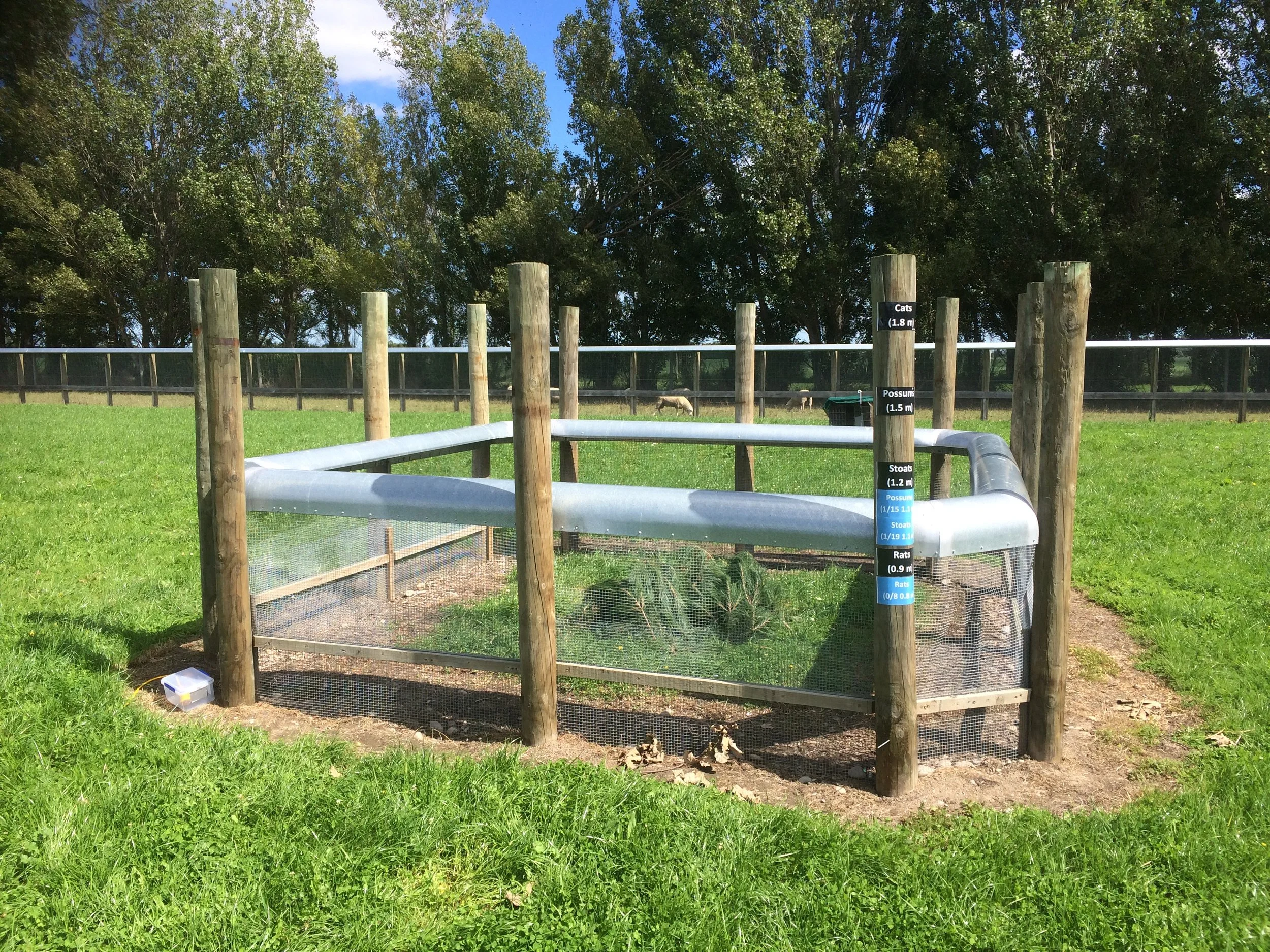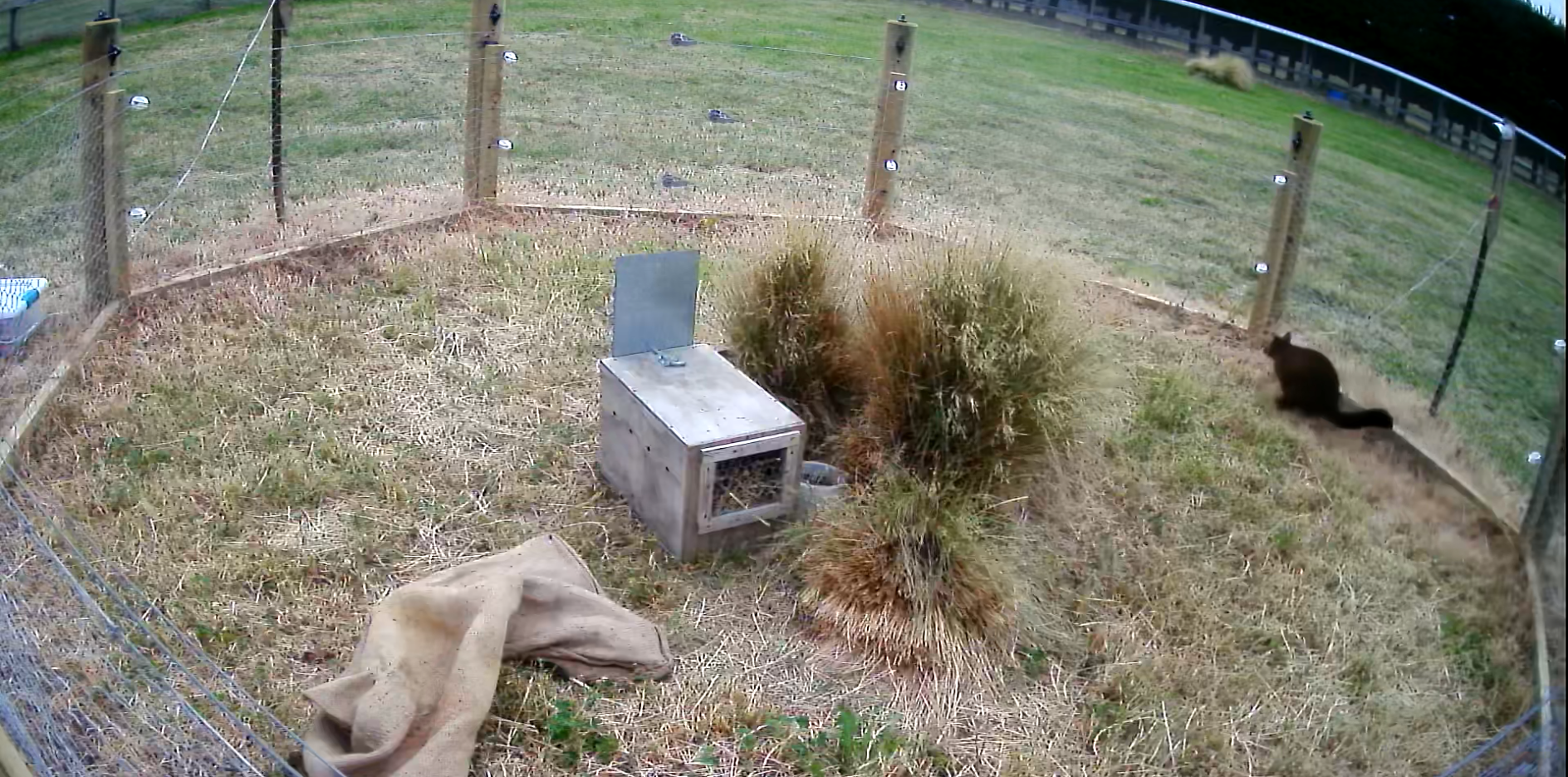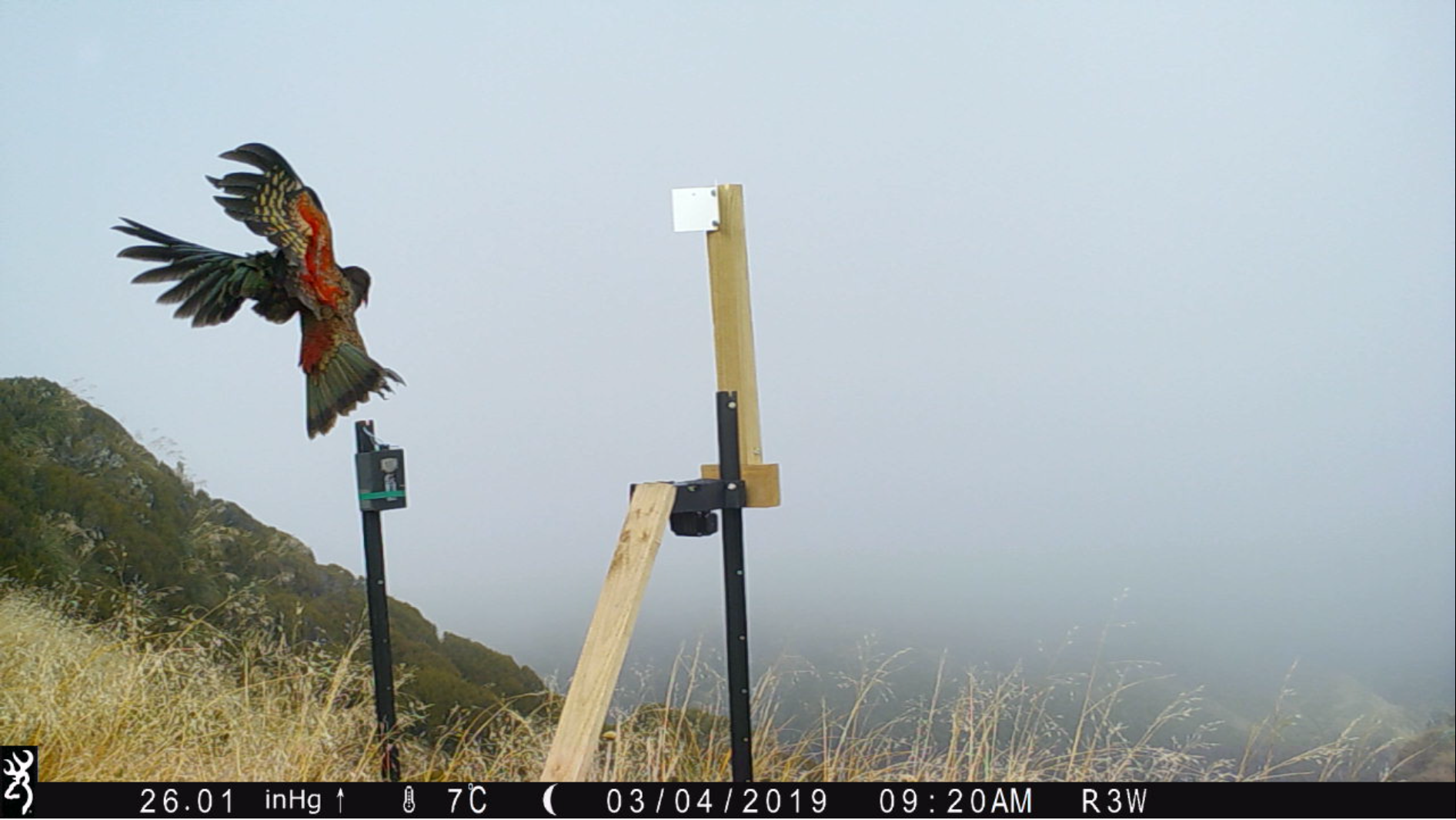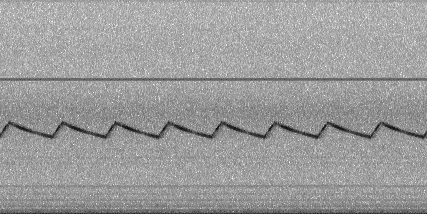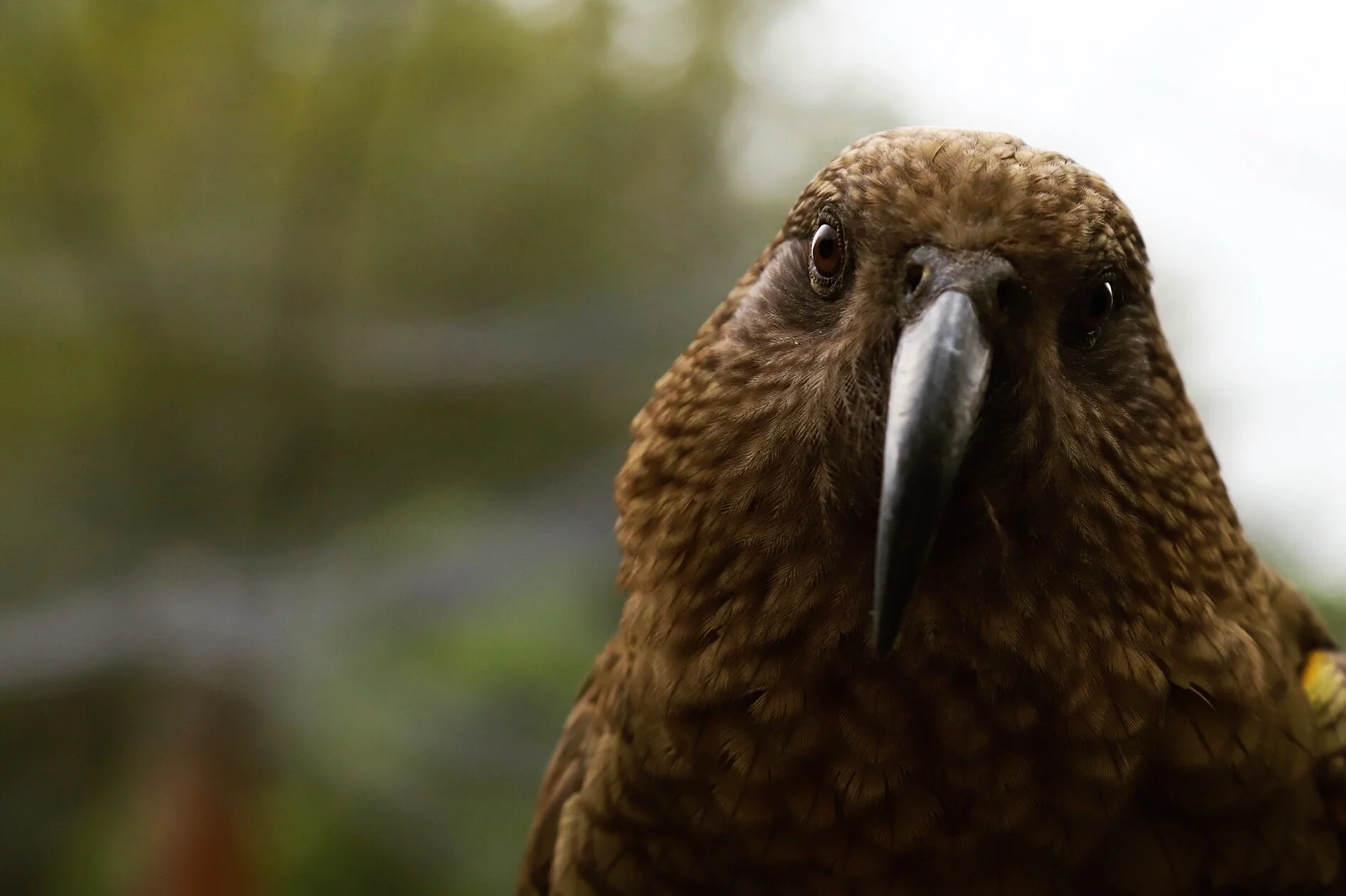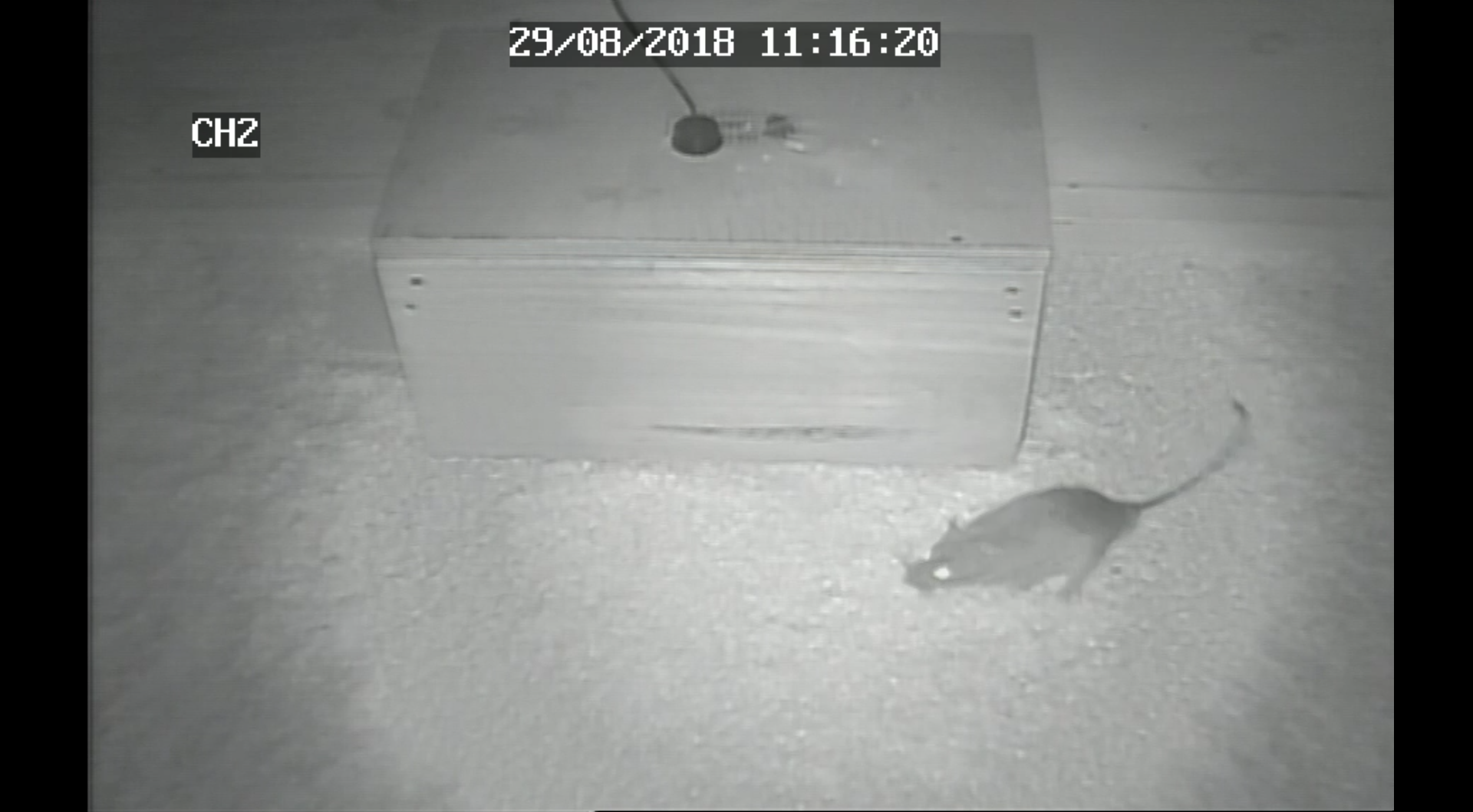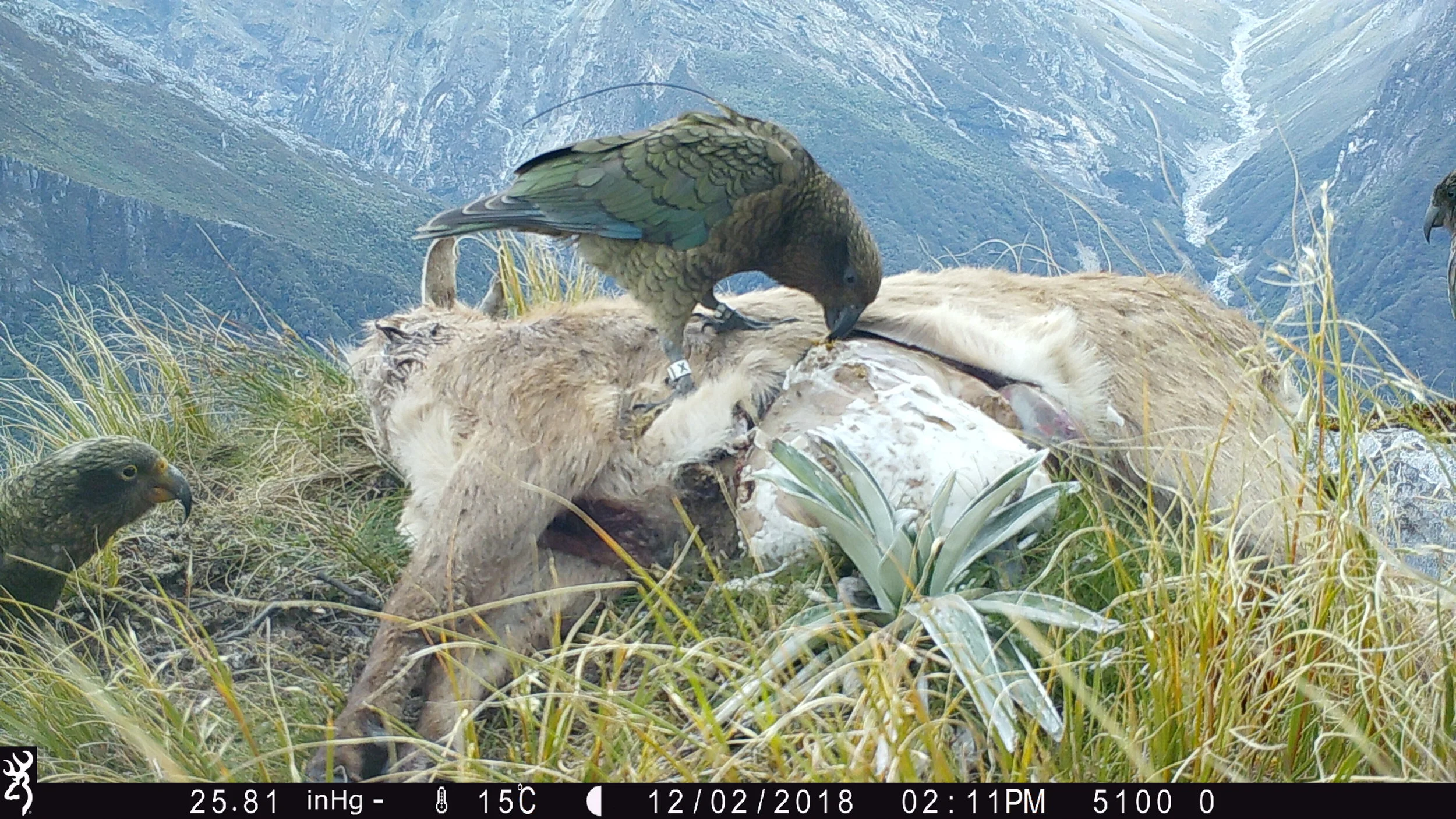Background
Constructing and maintaining a predator fence is not cheap, as it involves costs of earthworks, materials, fabrication/engineering, and ongoing maintenance. Currently, a traditional 1.8 m high fence seldom comes in cheaper than $250/m, and this cost can reach as high as $500/m on steep, tricky to access terrain.
Over the past five years, we’ve been undertaking trials to attempt to reduce the cost of a predator fence. This update summarises the results of the trials.
Our first phase of trials, which started in 2017, explored minimum fence height. We discovered that a 1,100mm high fence, fitted with a standard rolled steel cap, was sufficient to contain 95% of stoats and possums, and 100% of ship rats. This design is cheaper to construct than traditional 1,800mm fences, because its construction requires less mesh, staples, and fewer posts.
Since 2018, we have continued testing alternative fence designs, with a focus on trying to reduce the cost of the fence by using either (i) a cheaper material for the cap, or (ii) an alternative fence design that does not require a cap. The results are outlined below; we have yet to undertake a whole-of-life assessment of these designs.
A Cheaper Fence Cap
Multi-species predator fences in New Zealand are traditionally capped with a rolled or folded steel hood. Steel caps can be effective against a range of species but may be excessive in some contexts. The steel cap is a significant portion of the overall cost of a fence, and in some situations, a cheaper, species-specific alternative may be a more feasible option.
A ship rat attempts to climb over a low-height fence capped with a length of 90mm wide HDPE pipe during trials at Lincoln
High-density polyethylene (HDPE) pipe is a common, durable and non-brittle material, often used for water pipes. The smooth and hard surface is largely resistant to scratching, giving rats and stoats less purchase or grip and limiting climbing behaviour. One potential advantage of this material is that could be feasible to heat-bend around corner sections on-site (unlike steel caps where the corner sections must be precisely prefabricated off-site).
During testing at the animal behaviour facility (at Lincoln University), we found that 110 mm diameter HDPE pipe, fitted onto a 1,100 mm high, 12 mm x 12 mm mesh fence, was able to contain 94.7% of ship rats (18 out of 19 rats tested) and 95.2% of stoats (20 out of 21 stoats).This diameter pipe was not able to contain possums
You can find out more about this trial in the report we prepared for Predator Free Wellington (who asked us to run the trial).
Please note: we are not aware of anyone, as yet, using this method to cap a predator fence. And there are aspects of the research and development that we have not worked on, such as how to efficiently attach the mesh to this capping type, or how to join sections of piping.
An Alternative to Fence Caps - Electric Hotwires
Fences combining wire mesh and electric hotwires, have been used around New Zealand as a means of possum control for many decades. Working alongside Otago Peninsula Biodiversity Trust, we tested a design consisting of a 900 mm wire fence retrofitted with mesh and also with three single hotwires on 10 cm outriggers (at 400, 800, and 1,000 mm height).
Possum deterrent fence consisting of mesh and three electric hotwires
This fence only contained 62.5% of possums (10 out of 16 animals rested). Despite the high rate of escapes, the ability to retrofit this type of design, at very low cost, onto existing fences may be a useful tool for helping to slow the migration of possums (especially when used in combination with other control techniques, such as bait stations).
For further details please see Technical Report #11: Testing a modified electric farm fence as a possum-specific barrier.
Alternatives to Fence Caps – Sheet Metal Panels
Our current fencing trial work centres on finding a low-cost option for rat-specific barriers. In particular, we are interested in whether aluminium sheet metal can be used to fence rats.
Aluminium sheet metal collars are already widely used on trees and power-poles to prevent possums from climbing them. And is a cheaper, and lighter, alternative material than steel.
We are currently trialling whether a 300 mm strip of 0.45 mm aluminium sheet metal, secured to the top of an 800 mm mesh fence, is an effective barrier to ship rats. To date, 82% of ship rats have been contained by this fence design (18 out of 22 rats tested).
Mock-up of an aluminium sheet metal fence used for ship rat trials
We are undertaking further tests to determine the efficacy of this design on Norway rats and stoats.
General Advice about Predator Fencing
We regularly get asked for advice about fencing. Based on trials at our research facility, we think:
A standard capped predator fence at a height of 1.1 m, with a reduced skirt, generally does a good job at keeping possums, stoats and rats out of fenced areas. Note though, 1.8 m is the industry standard to keep cats out of sanctuaries.
Mice can be excluded with predator fence at a height of 1.1 m, provided "mouse proof" mesh is used. Standard 12 mm mesh won't protect against mice, but it will against rats.
110 mm diameter HDPE pipe shows promise as a potential replacement for standard pressed steel capping. Please note that this does not deter possums.
A hotwired fence used in combination with bait stations and/or kill traps may be a more cost-effective solution than a full-scale predator fence to deter possum reinvasions.
A good seal around the outside of any gates is a must, particularly if you are trying to exclude rats
This information is not intended to replace seeking out a solution that is suitable for your project – a predator fence may not actually be the most effective option. You may need to get someone to do an ecological assessment to determine the best ways for your project to become and remain predator free.
Before committing to predator fencing, it is also important to understand the whole cost, as well as the cost of potential alternatives. You will also need to consider any added social cost of having high fences in people’s backyards.


